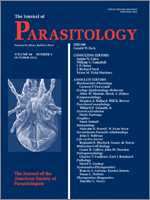Because the eggs of Ancylostoma species of dogs and cats are difficult to readily distinguish morphologically, isolation of a certain species often requires the humane death of the source animal or holding an animal after treatment to obtain worms for specific identification or to harvest ex utero eggs. The objective of this study was to obtain an isolate of Ancylostoma braziliense from 1-time, field-collected samples of feline feces without the need for the killing of any animals. During a collection trip to Florida, fecal samples (n = 40) were collected and identified as containing A. braziliense eggs (n = 26) using centrifugal sugar flotation. Eggs from hookworm-positive slides were washed into tubes, DNA was extracted, and 10 samples were identified as containing A. braziliense using restriction fragment length polymorphism (RFLP) with Hinf1. Six of these samples also contained DNA of Ancylostoma tubaeforme and, thus, only 4 samples were from cats infected only with A. braziliense. Larvae cultured from two of the latter samples were used to subcutaneously inoculate a purpose-bred puppy with the intention to inhibit the growth of any potentially contaminating A. tubaeforme larvae in the culture. The infection was patent at 14 days after inoculation, and the eggs were identified as A. braziliense by RFLP and DNA sequencing. Larvae were cultured from the feces of this dog and used to infect a laboratory-reared, specific-pathogen-free cat; the eggs and larvae produced by the cat were also identified molecularly as those of A. braziliense. The larvae from this cat were used to infect other cats to maintain the isolate for further research. Both the puppy and the first cat used in this study were treated to clear their infections and have since been adopted by new owners.
How to translate text using browser tools
1 October 2012
Obtaining an Isolate of Ancylostoma braziliense From Cats Without the Need for Necropsy
Janice L. Liotta,
Alice C. Y. Lee,
Khuanchai N. Koompapong,
Joseph P. Yaros,
Joseph Prullage,
Michael A. Ulrich,
Dwight D. Bowman
ACCESS THE FULL ARTICLE

Journal of Parasitology
Vol. 98 • No. 5
October 2012
Vol. 98 • No. 5
October 2012




